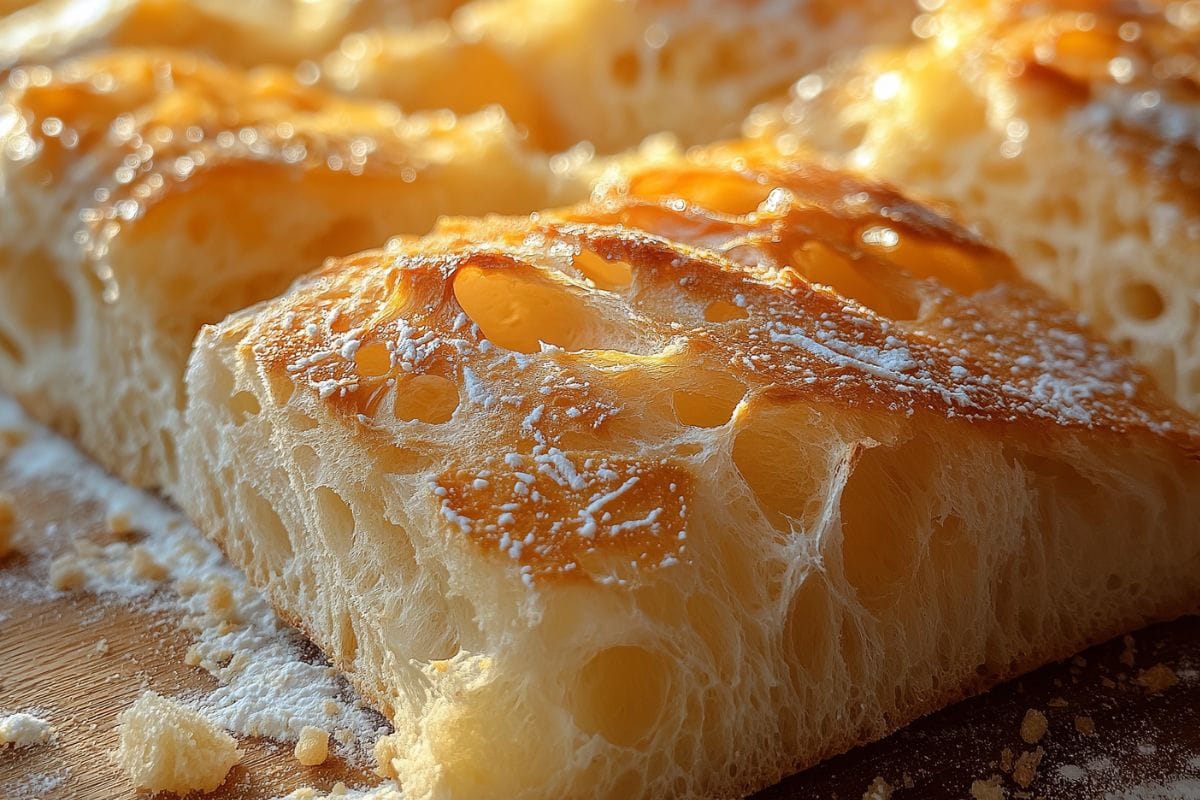Introduction:
Sourdough discard has gained attention among home bakers and health-conscious individuals for its potential benefits and versatility. This article explores whether sourdough discard can make foods healthier, delving into its nutritional benefits, various uses, and some common misconceptions.
1. Understanding Sourdough Discard:
1.1 What is Sourdough Discard?
Sourdough discard is the portion of the sourdough starter removed during feeding. This process ensures that the starter remains healthy and manageable. Although unfed, sourdough discard still contains beneficial microorganisms that can be used in various recipes. The discard typically has a thick, bubbly consistency with a tangy aroma, indicating the presence of lactic acid produced during fermentation.
1.2 Does Sourdough Discard Make Things Healthier?
Sourdough discard can enhance the nutritional profile of foods. It contains beneficial bacteria, pre-digested nutrients, and a distinctive sour flavor, which can reduce the need for added sugars or flavoring agents. However, the health benefits are not as significant as those from fully fermented sourdough bread. When used in recipes that allow for further fermentation, sourdough discard can contribute to better digestion and overall gut health.
1.3 Fermented vs. Unfermented Sourdough Discard Recipes:
There are two types of recipes that use sourdough discard: those that involve further fermentation and those that do not. Unfermented discard recipes, such as quick pancakes or crackers, use the discard primarily for flavor. These recipes offer limited health benefits compared to fermented discard recipes like long-fermented bread or overnight muffins, which provide a lower glycemic index and are easier to digest.
2. Health Benefits of Using Sourdough Discards:
2.1 Improved Digestion and Nutrient Absorption
Yes, sourdough discard offers several health benefits, especially in fermented recipes. The lactic acid bacteria in the discard can aid digestion and contribute to a balanced gut microbiome. It also helps break down phytic acid, increasing the bioavailability of essential nutrients such as iron and zinc. Additionally, the sourdough flavor can reduce the need for additional unhealthy ingredients, such as excess sugar or fat.
2.2 Why is it Important to Discard Sourdough?
Regularly discarding a portion of the sourdough starter is essential to maintain a healthy, active culture. Without discarding, the starter can become too large and acidic, which may hinder its leavening ability and negatively impact the flavor and texture of baked goods. Discarding helps to keep the starter balanced and effective.
2.3 Can Sourdough Discard Be Used as Fertilizer?
Sourdough discard can also be used as a natural fertilizer. The organic material in the discard can improve soil health by adding nutrients and enhancing soil structure. It can be composted or mixed directly into garden soil, making it an eco-friendly way to reduce food waste.
3. Sourdough Discard and Gut Health:
3.1 Why Are Sourdough Cookies Gut Healthy?
Sourdough cookies made from discard may be easier to digest and less likely to spike blood sugar levels than conventional cookies. The fermentation process begins breaking down starches and sugars, making the final product gentler on the digestive system.
3.2 Probiotic Content in Sourdough Discard
Sourdough discard contains probiotics, though their survival during cooking and baking can vary. Recipes involving minimal cooking or those incorporating discard into cold dishes are more likely to retain these beneficial bacteria, which support gut health.
4. Common Questions and Misconceptions:
4.1 Does Sourdough Discard Make Things Healthier Reddit?
Opinions on platforms like Reddit are mixed. Some users believe that discard can significantly improve the healthiness of recipes, especially when used in fermented dishes. Others see it as a flavorful addition rather than a health booster. The consensus is that sourdough discard can positively impact health, but it should not be overestimated.
4.2 Does Sourdough Discard Make Things Healthier Than Regular Flour?
Compared to regular flour, sourdough discard offers additional benefits due to its partial fermentation. This increases the availability of nutrients and introduces beneficial bacteria, making it a more nutritious option, particularly in recipes that allow for further fermentation.
4.3 Gluten Sensitivity and Sourdough Discard
Those with gluten sensitivity should be cautious with sourdough discard recipes. Quick discard recipes may not break down gluten sufficiently, potentially causing discomfort. However, long-fermented discard recipes may be more tolerable for those with mild sensitivities. It is essential to note that discard is not suitable for individuals with celiac disease.
5. Sourdough Discard Recipes and Applications:
5.1 Sourdough Discard Recipes:
- Sourdough Discard Crackers: A crispy, tangy snack that is easy to make and a great way to use up discard. You can learn more about 10 delicious ways to use sourdough discard here.
- Sourdough Discard Pancakes: These pancakes are light, fluffy, and have a subtle tangy flavor from the discard, making them a quick and satisfying breakfast option.
- Creative Recipes Using Sourdough Discard: Beyond the basics, sourdough discard can be used in innovative ways, such as in sourdough biscuits, spiced crackers, or even doughnuts, adding a unique twist to traditional baked goods.
5.2 What Does Sourdough Discard Look Like?
Sourdough discard typically appears as a thick, slightly viscous liquid. It may be bubbly, with a tangy aroma, and its color can range from pale beige to brown, depending on the flour used. Fresh discard should smell pleasantly sour, while discard that has been sitting for too long may develop an unpleasant odor.
5.3 Sourdough Discard Nutrition Facts
Sourdough discard is rich in B vitamins, particularly folate, and contains trace minerals like iron, magnesium, and zinc. It also has some omega-3 fatty acids and fiber. The fermentation process increases the bioavailability of these nutrients, making them easier for the body to absorb. However, the exact nutritional content can vary depending on the ingredients used in the starter and the length of the fermentation process.
6. Environmental and Non-Food Uses of Sourdough Discard:
6.1 Environmental Impact
Using sourdough discard reduces food waste, which is an important environmental concern. By repurposing discard instead of discarding it, bakers can significantly reduce the amount of waste generated. Additionally, using discard as compost or fertilizer supports sustainable practices by enriching the soil with organic matter.
6.2 Non-Food Uses of Sourdough Discard
Sourdough discard can be used beyond the kitchen. Its mild acidity makes it suitable for use in natural cleaning solutions, where it can help remove stains or act as a gentle abrasive. Some people also use sourdough discard in homemade face masks, leveraging its exfoliating properties. These non-food uses offer creative ways to make the most of every batch of sourdough starter.
Conclusion
Sourdough discard is much more than a byproduct of the sourdough-making process; it is a versatile ingredient that can contribute to a healthier diet and more sustainable living. While it may not offer the same level of health benefits as fully fermented sourdough bread, it still contains valuable nutrients and beneficial bacteria that can enhance various recipes’ nutritional profiles. Whether used in quick pancakes or long-fermented muffins, sourdough discard is a resource worth exploring. By understanding its potential and learning how to use it effectively, bakers can turn this humble ingredient into a cornerstone of their culinary creations.
For more creative uses of sourdough discard, check out 10 delicious ways to use sourdough discard.
Frequently Asked Questions (FAQs)
Q: Is sourdough discard healthy?
A: Yes, sourdough discard can be healthy, especially in recipes that allow for further fermentation. It contains beneficial bacteria, vitamins, and minerals that can enhance the nutritional value of foods.
Q: Can you use sourdough discard without fermentation?
A: Yes, sourdough discard can be used without further fermentation in recipes like pancakes or crackers, though the health benefits are less pronounced compared to fully fermented recipes.
Q: Does sourdough discard contain gluten?
A: Sourdough discard does contain gluten, and its tolerance for those with gluten sensitivity varies depending on how it is used. Long-fermented recipes may reduce gluten content, but they are not safe for individuals with celiac disease.
Q: What are some creative ways to use sourdough discard?
A: Sourdough discard can be used in a variety of recipes, from crackers and pancakes to biscuits and doughnuts. It can also be used as a natural cleaning agent or as a component in homemade skincare products.
Q: How does sourdough discard impact the environment?
A: By using sourdough discard instead of discarding it, bakers can reduce food waste and contribute to more sustainable practices. Additionally, discard can be composted or used as fertilizer to enrich soil.

